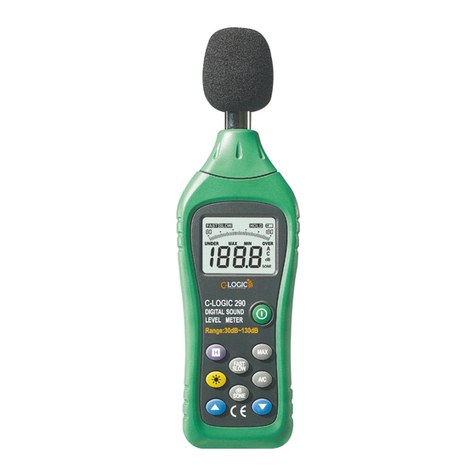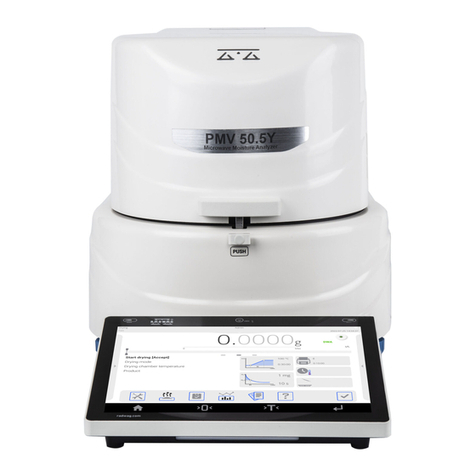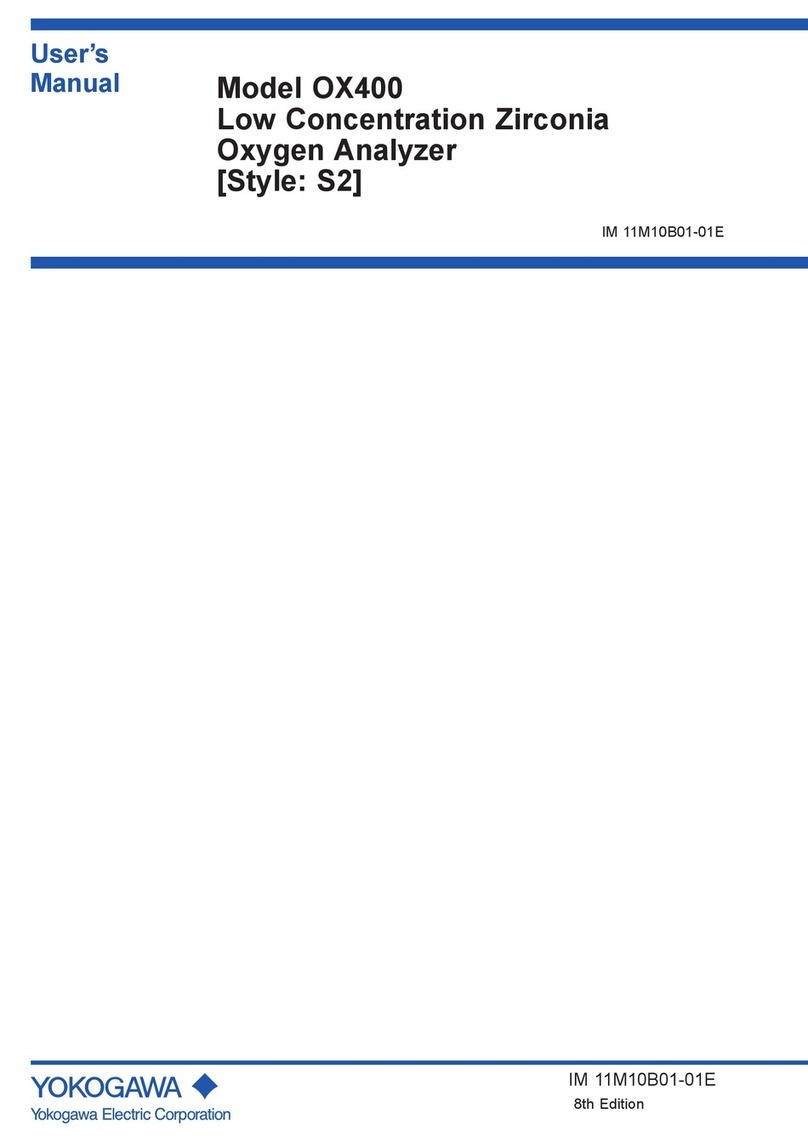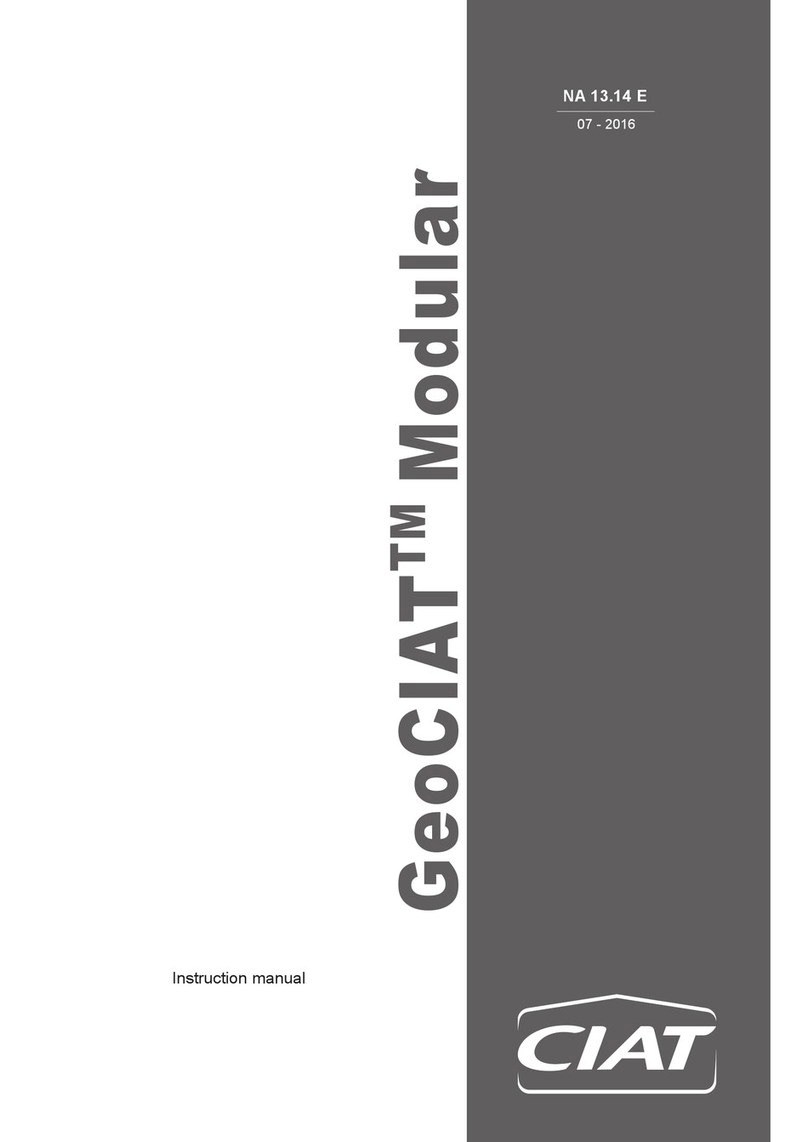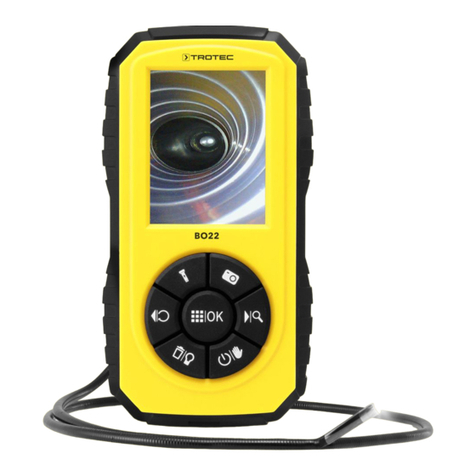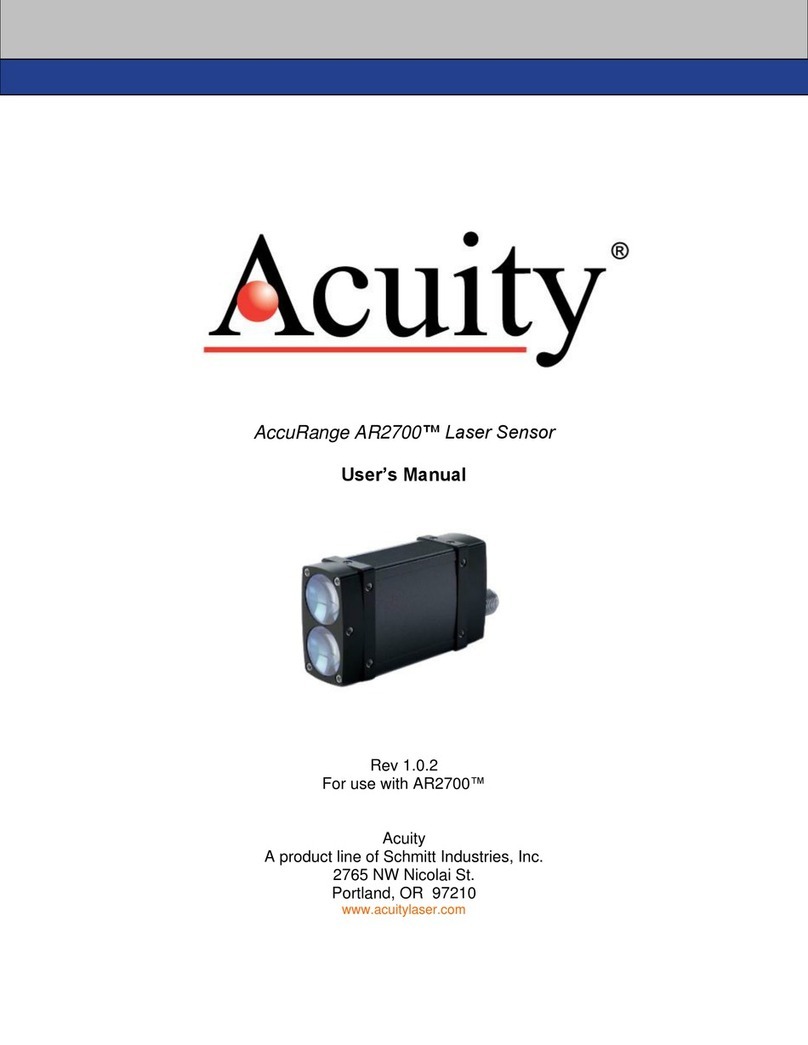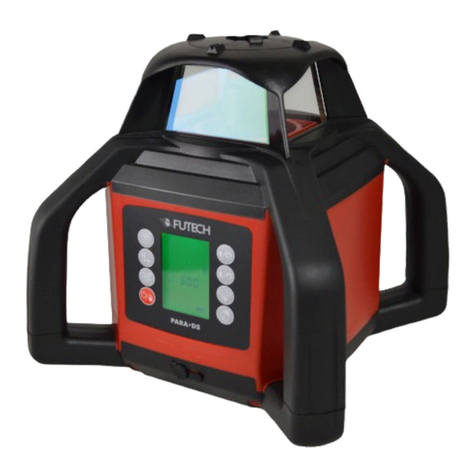South N6 Series User manual

Operation Manual
N6 Series
Electronic Total Station

© South Surveying & Mapping Technology CO.,LTD All Rights Reserved

INDEX
1.SPECIFICATION........................................................................1
1.1 EDM..........................................................................................1
1.2 Others......................................................................................2
2.BASIC OPERATION AND SETTINGS...........................................4
2.1 Brief Introductions...................................................................4
2.1.1 Basic Keys..........................................................................5
2.1.2 Reflector............................................................................6
2.1.3 Tribrach.............................................................................6
2.1.4 System Information...........................................................7
2.1.5 Initial Settings....................................................................7
2.1.6 Star Key............................................................................10
2.2 Angle Measurement...............................................................12
2.2.1 Function Menu in Page 1.................................................12
2.2.1.1 F1 ALL.......................................................................12
2.2.1.2 F2 OFSET...................................................................14
2.2.1.3 F3 HSET.....................................................................14
2.2.2 Function Menu in Page 2.................................................14
2.2.2.1 F1 HOLD....................................................................14
2.2.2.2 F2 REP. ......................................................................15
2.2.2.3 F3 V%........................................................................15
2.2.3 Function Menu in Page 3.................................................16
2.2.3.1 F1 CPMS....................................................................16
2.2.3.2 F2 R/L........................................................................16
2.2.3.3. F3 FILE......................................................................16
2.3 Distance Measurement..........................................................17
2.3.1 Function Menu in Page 1.................................................17

2.3.1.1 F1 ALL.......................................................................17
2.3.1.2 F2 MEAS....................................................................17
2.3.1.3 F3 MODE...................................................................17
2.3.2 Function Menu in Page 2................................................18
2.3.2.1 F1 OFSET...................................................................18
Angle offset..........................................................................18
Distance offset......................................................................18
Plane offset...........................................................................19
Column offset.......................................................................19
2.3.2.2 F2 S.O........................................................................20
2.4 Coordinate Measurement......................................................21
2.4.1 Import and Export from/to SD card................................22
2.4.2 Function Key....................................................................23
2.4.2.1 F3 FILE/P3.................................................................23
2.4.2.2 F3 OCC/P2.................................................................25
2.4.2.3 F2 B.S/P2..................................................................25
2.4.2.4 F1 HT/P2...................................................................26
2.4.2.5 F2 S.O/P3..................................................................26
2.4.2.6 F1 ALL/P1..................................................................28
2.4.3 Side Shot.........................................................................29
2.4.4 Resection.........................................................................29
2.4.4.1 Angle resection.........................................................29
2.4.4.2 Distance resection....................................................30
3.ADJUSTMENT & INFORMATION............................................31
3.1 Adjustment.............................................................................32
3.1.1 V0 / Axis Const................................................................32
3.1.2 V0 Adjustment (i angle)...................................................32
3.1.3 Collimation (2C) ..............................................................33

3.1.4 Horizontal Axis.................................................................33
3.2 Instrument Constant & Information.......................................34
3.2.1 Inst. Constant..................................................................34
3.2.2 Information.....................................................................34
3.3 Parameters.............................................................................34
3.3.1 Unit Set............................................................................34
3.3.1.1 Feet...........................................................................34
3.3.1.2 Angle.........................................................................34
3.3.1.3 Distance....................................................................34
3.3.1.4 Temp & Press............................................................34
3.3.2 Mode Set.........................................................................35
3.3.2.1 Power On Mode........................................................35
3.3.2.2 Dist Mode.................................................................35
3.3.2.3 NEZ/ENZ....................................................................35
3.3.2.4 V Angle Z0/H0...........................................................35
3.3.3 Other Set.........................................................................36
3.3.3.1 Min Angle Read........................................................36
3.3.3.2 Min Dist Read...........................................................36
3.3.3.3 Face in L or R.............................................................36
3.3.3.4 Auto Power Off.........................................................36
3.3.3.5 H-Angle Buzzer..........................................................36
3.3.3.6 Meas Buzzer..............................................................36
3.3.3.7 W-Correction............................................................36
3.3.3.8 Data & Time..............................................................37
3.3.3.9 Comm Parameters....................................................37
3.3.3.10 Grid Factor..............................................................37
3.3.4 Format Parameter...........................................................37
3.3.5 Bluetooth........................................................................37

4.DATA COLLECT, STORAGE & STAKE-OUT.................................38
4.1 Data Collect............................................................................38
4.1.1 New Job...........................................................................38
4.1.2 Set the OCC PT and BS PT................................................38
4.1.2.1 Set the Occupied Point.............................................39
4.1.2.2 Set the Backsight Point.............................................39
4.1.3 FS/SS................................................................................40
4.1.4 Resection.........................................................................41
4.1.5 Config of Data Collect......................................................41
4.1.5.1 Collect Sequence......................................................42
4.1.5.2 Data Confirm............................................................42
4.1.5.3 Select SD/HD.............................................................42
4.1.6 Export the File to SD Card...............................................42
4.2 Memory Management...........................................................43
4.2.1 File Maintain...................................................................43
4.2.1.1 Meas. File.................................................................43
4.2.1.2 Coord File..................................................................43
4.2.1.3 PCode File.................................................................44
4.2.1.4 Fixed Data.................................................................45
4.2.1.5 U Disk Mode.............................................................45
4.2.2 Data Transfer...................................................................46
4.2.2.1 Connection between N6 and PC...............................46
4.2.2.2 Send Data.................................................................47
4.2.3 Edit the Known Coordinate.............................................48
4.2.4 Select the Code File.........................................................49
4.2.5 Dist Attribute...................................................................49
4.3 Layout.....................................................................................49
4.3.1 Set the OCC PT and BS PT................................................50

4.3.2 Set the Layout Point........................................................50
4.3.3 Side Shot.........................................................................51
4.3.4 Resection.........................................................................51
5.PROGRAMS..........................................................................52
5.1 REM........................................................................................52
5.2 MLM.......................................................................................53
5.2.1 MLM-1 (A-B, A-C)............................................................53
5.2.1.1 Calculate by distance measurement........................53
5.2.1.2 Calculate by coordinate invoking..............................54
5.2.2 MLM-2 (A-B, B-C)............................................................55
5.2.2.1 Calculate by distance measurement.........................55
5.2.2.2 Calculate by coordinate invoking..............................55
5.3 Z Coordinate...........................................................................56
5.4 Area........................................................................................57
5.5 Point to Line...........................................................................58

1
1. SPECIFICATIONS
1.1 EDM
Carrier Wave
0.65~0.69μm
Effective Range of Bluetooth
5m
Reflectorless Range
600m
Oscillation Frequency
150MHz
EDM Type
Coaxial
Minimum Reading for Distance
0.1mm
Laser Dot without Reflector
(Red laser beam)
Around 7mm×14mm/20m
Around 10mm×20mm/50m
Atmosphere Correction
Manual Input, Auto correction
Earth Curvature Correction
Manual Input, Auto correction
Prism Constant
Manual Input, Auto correction
Dist.Unit
Meter/US.Feet/International
Feet/ Feet-inch optional
Average Measure Time
3 Times
Distance Measurement
Accuracy With Reflector
Measure Mode
Accuracy
Time
Fine Mode
±(2+2×
6
10
·D*¹)mm
<0.3s
Tracking Mode
±(5+2×
6
10
·D)mm
<0.1s
IR Sheet Mode
±(2+2×
6
10
·D)mm
<0.3s
Accuracy w/o Reflector
*with Kodak Gray Card White Side (90% reflective)
Fine Mode <300m
±(3+2×
6
10
·D)mm
0.3~3s in normal,
less than 10s
Fine Mode >300m
±(5+2×
6
10
·D)mm
Tracking Mode
±(10+2×
6
10
·D)mm

2
Max. Range
With Reflector
*² Good Conditions
Single Prism
IR Sheet
5000m
600m
Without Reflector
*² Good Conditions
White*³
Gray Degree 0.18
600m
300m
*¹ D= distance in mm
*² Good Conditions: slight haze, visibility about 20km
*³ Kodak Gray Standard (90% reflective)
1.2 Others
Angle Measurement
Measuring Method
Absolute Encoding
Diameter of Encoding Disk
79mm
Minimum Reading for Angle
0.1″/1″/5″/10″optional
Accuracy
2.0″/5.0″
Telescope
Image
Erect
Tube Length
154mm
Effective Aperture
45mm (EDM:50MM)
Magnification
30x
Field of View
1°30’
Minimum Focus Distance
1.4m
Resolving Power
3”
Compensator
System
Dual axis liquid-electric
Working Range
±4’/6’ optional
Accuracy
1”
Vial

3
Plate Vial
30”/2mm
Circular Vial
8’/2mm
Laser Plummet
Accuracy
±1.5mm( at 1.5m)
Optical Plummet (OPTIONAL)
Image
Erect
Magnification
3 x
Focusing Range
0,5m~∞
Field of View
5°
Display Unit
Type
6 Lines LCD screen
Data Communication
Port
RS-232C/USB/SD Card/ Bluetooth
Battery
Type
Rechargeable Lithium battery
Voltage
7.4V DC, 3100mAH
Continuous Operation Time
8 hrs
Working Environment
Temperature
-20℃~+50℃
Dimension
Size
160mm×150mm×330mm
Weight
5.2kg

4
2.BASIC OPERATIONS AND SETTINGS
2.1 Brief Introductions
1
Handle
2
Battery
3
Battery Lock
4
Optical Unit
5
Optical Focusing Ring
6
Eyepiece
7
Eyepiece Focusing Ring
8
Eyepiece Handle
9
Collimator
10
Central Mark
11
Vertical Clamp and Tangent
Unit
12
13
Vial Bubble
14
Vial Screw
15
Horizontal Clamp and
Tangent Unit
16
17
Power Key
18
Display Unit
19
RS-232 Comm Port
20
USB Comm Port
21
SD Card Slot
22
Circle Bubble
23
Tribrach Lock
24
Leveling Screw
25
Base

5
2.1.1 Basic Keys
The icon shown as below:
Vertical Angle
Horizontal Left
Function Menu
ALL OSET HSET
Function Key
Enter
Esc
Star Key
Menu/Move Right
Num./Alph.Key
Power Key
Cord./Move Left
Angle/Move Up
Distance/Move Down
Key
Name
Function
Star key
Enter the star mode
Angle measuring
Enter to angle measurement mode
Distance measuring
Enter to distance measurement mode
Coordinate measuring
Enter to coordinate measurement mode
Menu
Enter to menu mode
Esc
Cancel operation,or return to the last page
Power key
Power ON/OFF
~
Function key
Functions correspond to information displayed
~
Number keys
Input numbers/characters, or select items
Move keys
Move the cursor to the left, right, up and down
Enter
Confirm the data,or go down to next item
Icon
Meaning
Operation
Dual sensor
Single sensor

6
2.1.2 Reflector
When measuring distance, a reflector prism needs to be placed at the target place.
Reflector systems come with single prism and triple prisms, which can be mounted with
tribrach onto a tripod or mounted onto a prism pole. Reflector systems can be
self-configured by users according to job.
2.1.3 Tribrach
Use the straight screwdriver to loosen the fix screw on the tribrach, with 180°anti-clock
wise direction. Then pull out the equipment.
Sensor closed
Bluetooth closed
(system setting) (Bluetooth) (Off)
Bluetooth open
( system setting) ( Bluetooth) (Open)
Reflectorless
mode
Reflector mode
Reflector sheet
Battery voltage
Display the battery voltage in real time
SD Card
SD Card inserted
Anchor Jaw
Circular Bubble
RS-232 Comm Port
Directing Stub
Fix Screw
Directing Slot
Locking Knob

7
2.1.4 System Information
Hold the power key in 1s to power on. The initial page is the angle measurement mode (a),
press to enter the system information page (b). Press [3] Information to
check the hardware information.
Hold the power key in 4s to power off.
2.1.5 Initial Settings
Mount the instrument to the tripod. Level and center the instrument precisely to
ensure the best performance.
Operation Reference:
1. Leveling and Centering the Instrument by plumb bob
1) Setting up the tripod
① First of all, extend the extension legs to suitable length, make the tripod head
parallel to the ground and tighten the screws.
② Make the centre of the tripod and the occupied point approximately on the same
plumb line.
③ Step on the tripod to make sure whether it is well stationed on the ground.
2) Attaching the instrument on the tripod
Place the instrument carefully on the tripod head and slide the instrument by
loosening the tripod screw. If the plumb bob is positioned right over the center of the
point, slightly tighten the tripod.
3) Roughly leveling the instrument by using the circular vial
① Turn the leveling screw A and B to move the bubble in the circular vial, in which
case the bubble is located on a line perpendicular to a line running through the centers

8
of the two leveling screw being adjusted .
② Turn the leveling screw C to move the bubble to the center of the circular vial.
4) Precisely leveling by using the plate vial
① Rotate the instrument horizontally by loosening the Horizontal Clamp Screw and
place the plate vial parallel to the line connecting leveling screw A and B, and then
bring the bubble to the center of the plate vial by turning the leveling screws A and B.
② Rotate the instrument 90º(100g) around its vertical axis and turn the remaining
leveling screw or leveling C to center the bubble once more.

9
③Repeat the steps ①② for each 90º(100g) rotation of the instrument and check
whether the bubble is correctly centered in all directions.
2. Centering by using the optical plummet
1) Set tripod
Lift tripod to suitable height, ensure equal length of three legs, spread and make
tripod head parallel to the ground, and place it right above the measurement station point.
Prop up tripod on the ground and fix one leg.
2) Install instrument and collimate the point
Set instrument carefully on tripod, tighten the central connecting screw and adjust
optical plummet to make the reticle distinctly. Hold the other two unfixed legs with both
hands and adjust position of these two legs through observation of optical plummet. As it
approximately aims at the station point, make all three legs fixed on the ground. Adjust
three leg screws of the instrument to make optical plummet collimate precisely to the
station point.
3) Use circular vial to roughly level the instrument.
Adjust length of three legs of tripod; make the circular vial bubble of the instrument in
the middle.
4) Use plate vial to level the instrument accurately.
① Rotate the instrument horizontally by loosening the Horizontal Clamp Screw and
place the plate vial parallel to the line connecting leveling screw A and B, and then
bring the bubble to the center of the plate vial by turning the leveling screws A and B.
② Rotate the instrument 90℃, make it perpendicular to the connecting line of level
screws A and B. Turn level screw C to make the bubble of the plate vial in the middle.
5) Precisely centering and leveling
Through observation of optical plummet, slightly loosen the central connecting screw and
move the instrument evenly (Don’t rotate the instrument), making the instrument
precisely aim to the station point. Then tighten the central connecting screw and level the

10
instrument precisely again.
Repeat this operation till the instrument collimate precisely to the measurement station
point.
2.1.6 Star Key
Press to activate the Star Key menu, press direction key / / / to move
the cursor, press function keys to operate. Press to exit the menu.
(1) Direction keys
Reflector: the default setting is NON-P. Press to switch among Prism, Sheet and
Non-prism mode.
Plummet: the intensity for laser plummet. Press to switch the value among 2→1
→0→4→3→2, 0 means off.
Contrast: the default value is 10. Press to switch the contrast for LCD screen
among 10→11→……→16→00→01→02……→09→10.
CrosHair: Illumination for crosshair. The default value is 0. Press to switch the
value among 0→1→2→3→4→0, 0 means off.
(2) Function keys
ILL: Illumination for LCD screen and keyboard. The default setting is on. Press F1 to
open or close the illumination.
TILT: On/Off the tilt sensor. The default setting is dual-axis sensor. Press F2 to enter 1/2
page. Then press X-ON for single X-axis compensation, press F2 XYON for dual-axis
compensation. Press F3 OFF to close the compensator. Press F4 to enter 2/2 page. It
will display the compensate value on current position.
Point: On/off laser pointer. The default setting is off. Press F3 to switch the laser

11
pointer between on and off.
PARA: Parameter setting menu.
Input the value of temperature and atmosphere pressure. It will calculate the PPM
automatically based on the atmosphere correction.
Reference value: Temperature 20℃,pressure P=1013hPa
Calculation formula:
t
P
003661.01
294922.0
44.278PPM
Users can also calculate the PPM value based on the formula by themselves and input
the value by manual.
Note: a) Input range for temperature :-30℃~+60℃, min. 0.1℃increase; Input range
for atmosphere pressure560~1066hPa, min.0.1hPa increase. B) Input range for PPM is
-999.9~999.9ppm.
(3) Reflecting Signal
When the deviation among line of sight and emitting & receiving axis is over-range, please
adjust the emitting axis to the prism center.
Press to select Prism mode, press F4 PARA then aim at the target center. It
will show the intensity of signal by a column. The default prism constant is -30mm. Adjust
the horizontal tangent unit or telescope focusing ring, the emitting axis will focus precisely
to the target center when the reflecting signal reaches the maximum value.

12
2.2 Angle Measurement
Press to power on the equipment, N6 will enter
the angle measurement mode automatically. If the
current mode is distance or coordinate
measurement mode, press to switch to angle
measurement mode.
2.2.1 Function Menu in Page 1
2.2.1.1 ALL
ALL means measuring and saving. If the user need to change the current file or create a
new file as the current file, please press FILE on page 3 at first.
When creating a new file, the equipment will create the .SMD and .SCD file under the
same name automatically. SMD means South Measure Data, is used for record the data of
horizontal disk, vertical disk and SD. SCD means South Coordinate Data, is used for record
3D coordinate for measured points.
Q.: How to measure the horizontal angle for target B/C by multiple round observation?
a) Aim at target B in Horizontal Left (HL), press HSET then input value as 0°00’ 30”.
Press ALL, and YES to record the result. Input point name for target B. Press
REC to save the data under the current file.
b) Rotate the equipment in clockwise direction to aim at target C.
Press ALL, and YES to record the result and name the point. Press REC to
save the data.
c) Rotate the EDM in vertical direction in Horizontal Right. Aim at target C.
Press ALL, and YES to record the result and name the point. Press REC to
save the data.
d) Rotate the equipment in anti-clockwise direction to aim at target B.
Press ALL, and YES to record the result and name the point. Press REC to

13
save the data.
In the second round, input HSET value as 90°00’ 30”. Measure and record the data as the
above steps. ∠BAC can be calculated as below:
e) Export the file to SD card:
Press in twice to page 3, then FILE ,LIST,EXP to export the data
under the current file “180105_1” as below:
180105_1_600.txt Format 600 file
180105_1_300.txt Format 300 file
180105_1.dat Coordinate file for SOUTH CASS
180105_1.csv Coordinate file for SOUTH CASS
There are some differences between format 600 and format 300 file. Check the picture
shown as below. 600.txt included the data in two lines for each measured point. SS line is
Point Name, Target Height, Code; while HV line is Horizontal Reading and Vertical Reading.
*Note: Please double check that SD card has been inserted inside the equipment before
export the data. The equipment will shown icon on the right side.
Station
Target
HL/HR
Reading
Half-round
Whole-round
Average
1st
Round
B
HL
0° 00’ 28”
138° 14’ 22”
138° 14’ 19”
138° 14’
19.5”
C
138°14’ 50”
B
HR
180° 00’ 31”
138° 14’ 16”
C
318° 14’ 47”
2nd
Round
B
HL
90° 00’ 26”
138° 14’ 25”
138° 14’ 20”
C
228° 14’ 50”
B
HR
270° 00’ 31”
138° 14’ 15”
C
48° 14’ 46”
Other manuals for N6 Series
1
Table of contents
Other South Measuring Instrument manuals

South
South A1 Series User manual
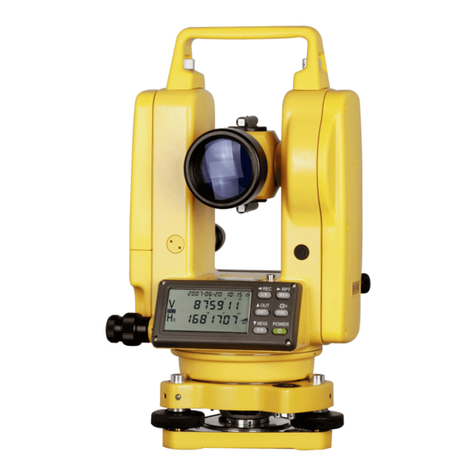
South
South ET-02 User manual

South
South N6 Series User manual

South
South N40 Series User manual
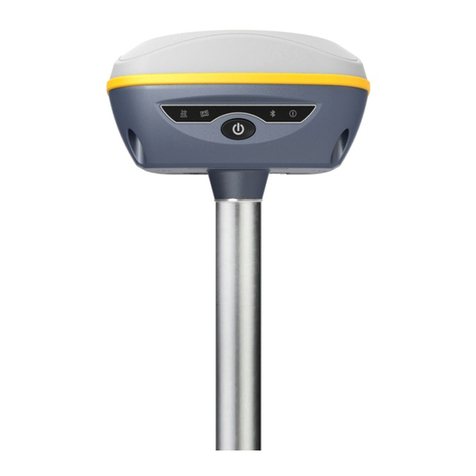
South
South GALAXY G7 User manual

South
South N6+ Series User manual
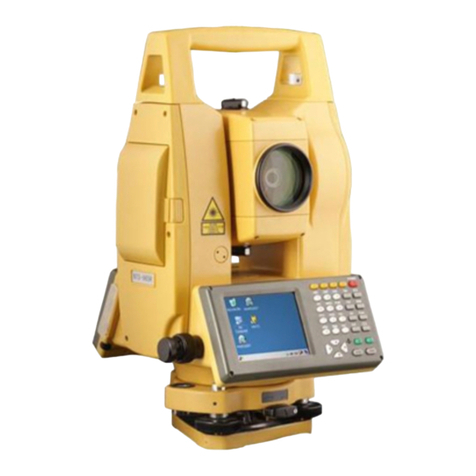
South
South NTS-960R User manual
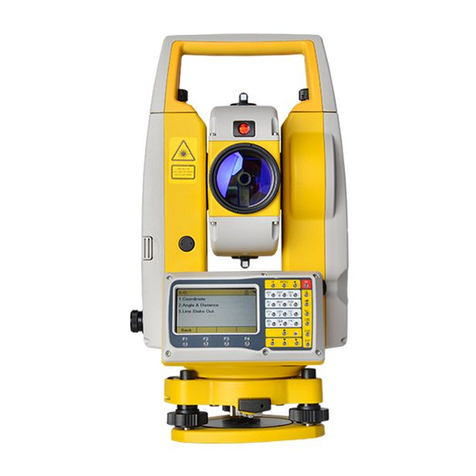
South
South N3 Series User manual

South
South Galaxy G2 User manual

South
South Galaxy G1 User manual
Popular Measuring Instrument manuals by other brands
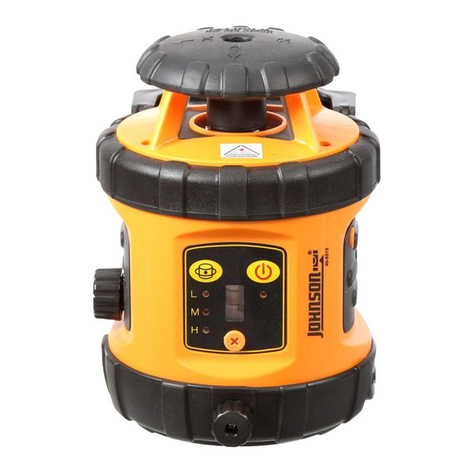
Johnson
Johnson 40-6515 quick start guide
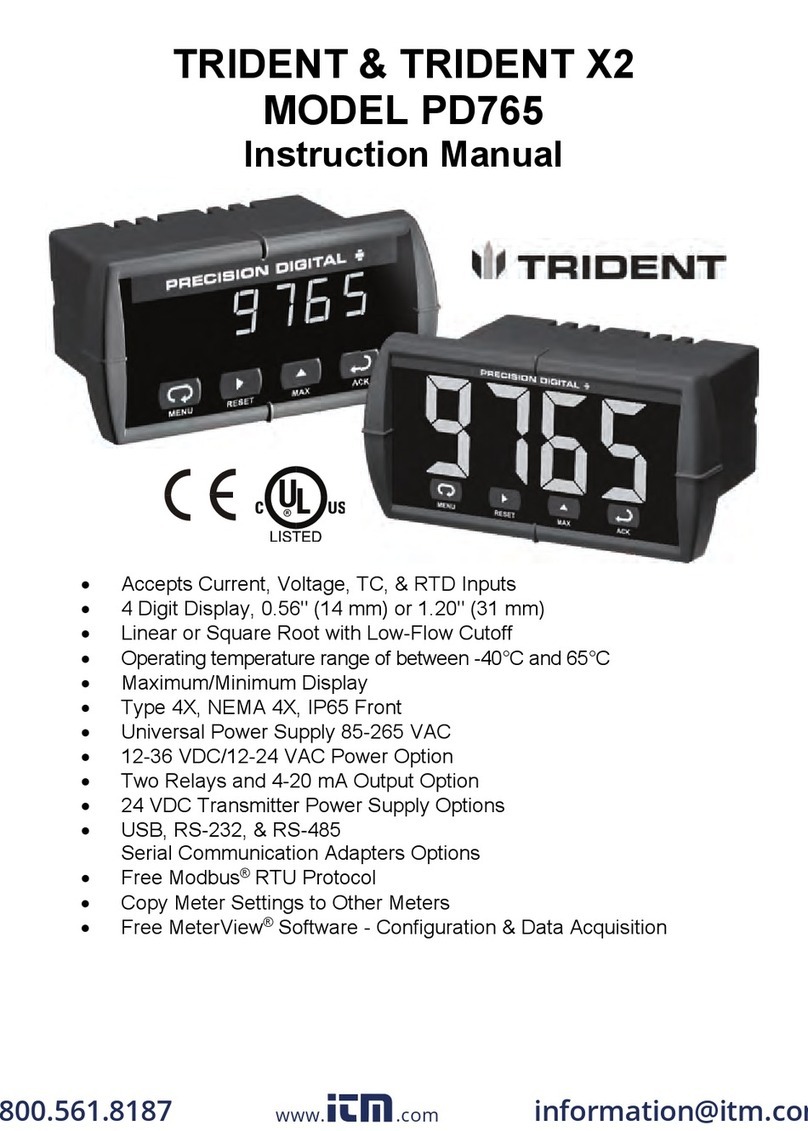
Precision Digital Corporation
Precision Digital Corporation TRIDENT instruction manual
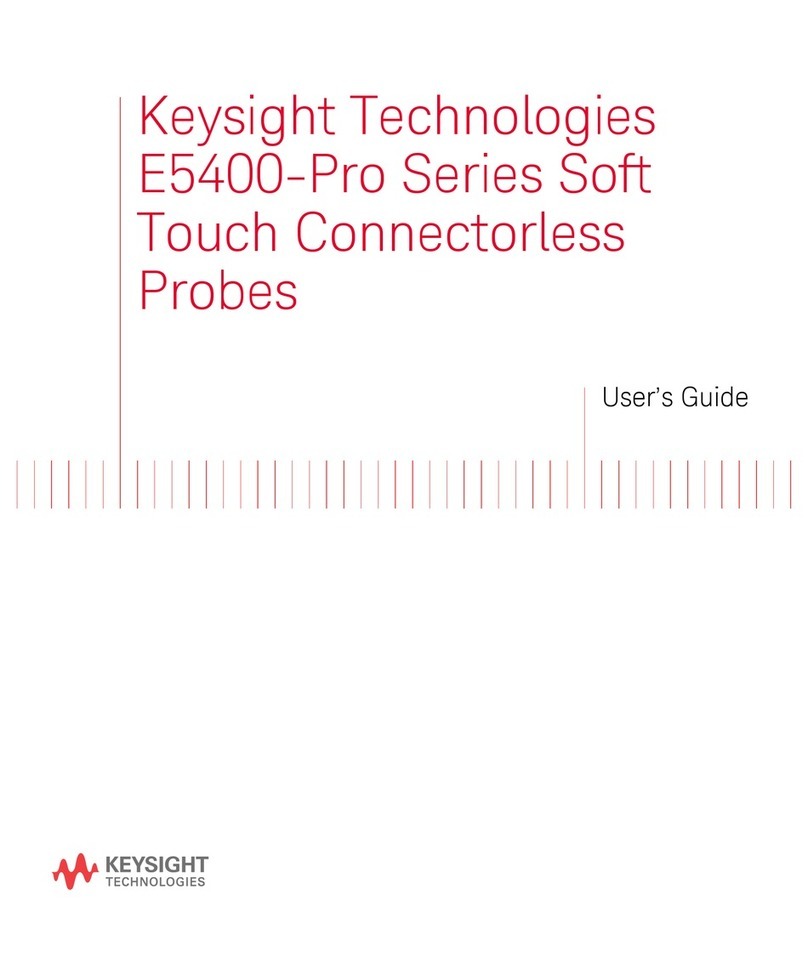
Keysight Technologies
Keysight Technologies E5400-Pro Series user guide
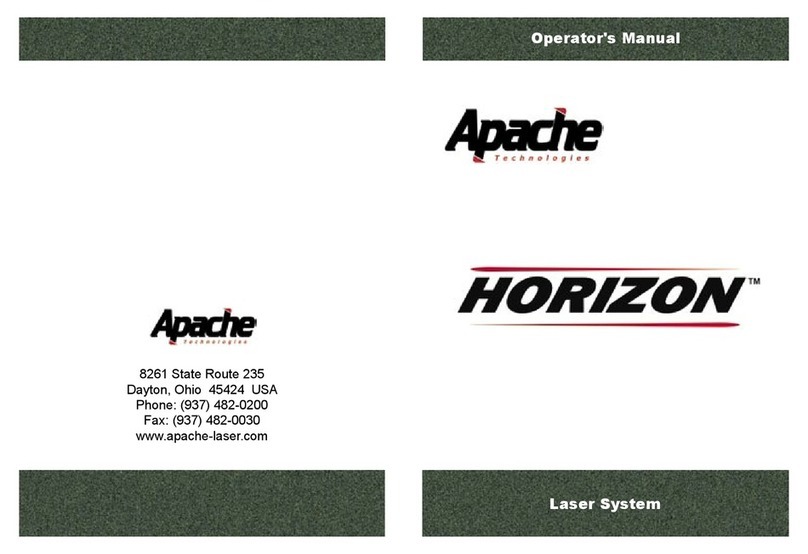
Apache
Apache Horizon Operator's manual
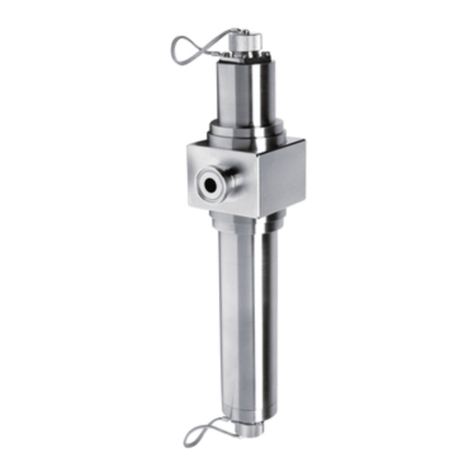
Endress+Hauser
Endress+Hauser OUSAF44 operating instructions

Leica
Leica Lino L2 user manual


